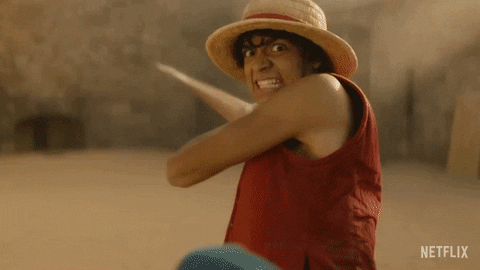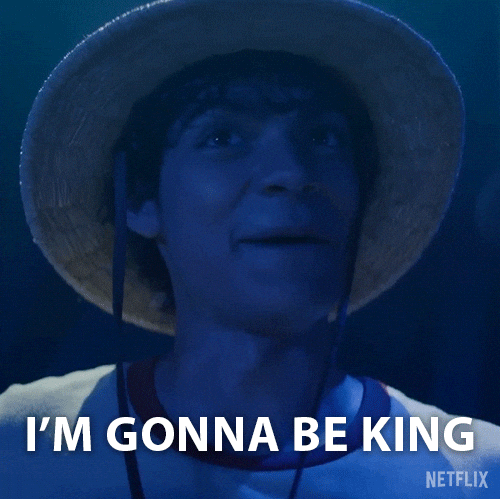The news of a popular anime getting adapted into a live-action film can the the stuff of nightmares for the otaku clan (a popular term used to describe anime fans). For several reasons, but mainly because well-loved series that have been adapted into live action have disappointed nearly everyone. But Netflix's live-action One Piece version turned out to be a massive blockbuster, breaking the streaming service's long-standing curse with anime adaptations. The show debuted at No. 1 spot in 84 different countries across the globe in its first weekend of streaming.

One Piece started as a manga published on July 22, 1997, which later got adapted into an anime series and is now a Netflix original. The story around the main lead Monkey D. Luffy, a young pirate chasing his lifelong dream of becoming King of the Pirates, as he gathers an unlikely crew and sails off in search of the coveted One Piece, a legendary treasure that will secure his place as King.

There has always been heated debates on the internet around live-action adaptations of anime or manga, owing to the fact that, despite trying to remain loyal to the original material, these shows or movies typically encounter challenges such as casting and plot complexity. For example, past live-action adaptations such as Dragon Ball Evolution, Death Note, Cowboy Bebop, and Attack on Titan have all been massive flops. But one might wonder what worked, how One Piece escaped this curse. One of the biggest reasons is the full-fledged creative collaboration with the original manga author, Eiichiro Oda, who ensured the programme stayed true to its roots.
The Picture-Perfect Casting
One Piece also has amazing graphics, with the clothing, hair, and makeup translating well on screen to capture the flavour of the original anime. The CGI is quite fluid and convincing for the more outlandish sequences, such as Luffy's stretching or Buggy the Clown's physical mutilation. Its casting is exceptional, as each actor works hard to represent the characteristics that made the original characters so famous while adding depth and passion to attract live-action fans. Anyone who has watched the anime as well as the new live-action series would agree that the casting is superb. This is something almost every live-action adaptation has failed at.
/elle-india/media/post_attachments/wp-content/uploads/2023/09/57fed530fc312e37fb0dbdb9fe8637f1.jpeg) Straw Hat Pirates
Straw Hat Pirates
In the anime, the main character, Luffy, played by Inaki Godoy, is stupid, friendly, and, more significantly, virtuous, with a never-say-die attitude in the face of hardship. His portrayal flawlessly mirrored everything, allowing viewers to see what the true character looks like in live action.The entire ensemble that features Emily Rudd as Nami, Mackenyu as Roronoa Zoro, Jacob Romero Gibson as Usopp, and Taz Skylar as Sanji, the main five members of the Straw Hat Pirates did a fantastic job. Extra points to the casting department's diligent work, which is remarkably vast for such a short TV series. An added glimmer? The actors are actual One Piece fans, which worked wonders while attracting anime fans to give this show a chance.
Eiichiro Oda's Involvement
My personal favourite factor is the presence of famed manga author Oda, which played a crucial part in its success. Oda, as the creator, understood the assignment and knew exactly what people wanted to see because he has been doing it for more than 25 years with One Piece's anime and manga. When it was revealed that Eiichiro Oda would personally manage the live-action movie, many fans were rooting for it to be a success, simply because of his massive impact on the anime industry.
Big Bag Budget
A large budget never promises a successful series. Heavy production expenditures build unrealistic money-back expectations. That being said, the live-action One Piece was never suppose to inexpensive, and Netflix completely understood that. According to reports, the budget for One Piece is $18 million per episode, putting the full eight-episode season at around $144 million. This makes One Piece one of Netflix's most costly programmes (second only to Stranger Things), with a greater per-episode budget than HBO's Game of Thrones or Disney's The Mandalorian.
/elle-india/media/post_attachments/32446941bb45826cd3b516acb9b3687e/fefab48f8705f735-25/s540x810/5b19543d422ee38dee3e548de9f06923f840ad93.gif)
Also, read 5 Comfort Anime Series That Feel Like A Warm Hug On A Rainy Day
/elle-india/media/agency_attachments/2024/12/12/2024-12-12t050944592z-2024-11-18t092336231z-czebsydrcd4dzd67f1wr.webp)
/elle-india/media/agency_attachments/2024/12/12/2024-12-12t050944592z-2024-11-18t092336231z-czebsydrcd4dzd67f1wr.webp)
/elle-india/media/media_files/2025/06/13/LjKZqcSP25GxKomzDeGW.webp)
/elle-india/media/post_attachments/wp-content/uploads/2023/09/BANNER-IMG-24-2.png)
/elle-india/media/post_attachments/wp-content/uploads/2023/09/emily-rudd-in-aki-godoy-mackenyu-arata-one-piece-64ef0cf88bf63.jpeg)